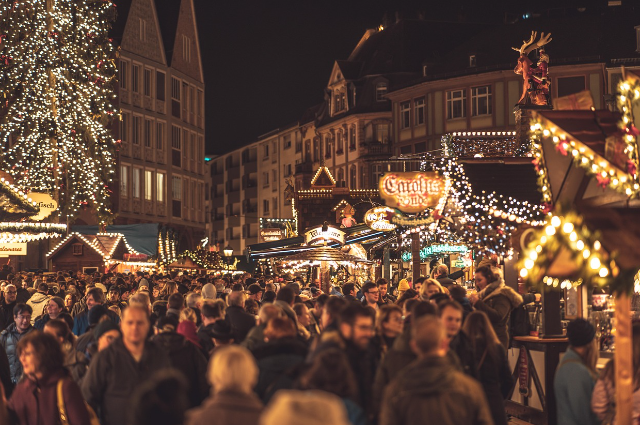
Our Indian culture and tradition are known to be very sacred and well-renowned across the world. India has provided the world with some of the best examples of tradition and Hindu culture. By taking reference from many mythological stories like "The Ramayana" and "Mahabharata," a lot of cultural practices have been followed for many centuries. The festivals like Deepawali and Dussehra, which we celebrate with full enthusiasm and joy, are associated with our tradition and culture. With the passing of time and the current boom of social media and trends, the way to celebrate these festivals and rituals is changing drastically. Social media is significantly transforming the way Indian festivals are celebrated. Traditional customs are now merging with modern digital trends, resulting in a new kind of celebration that blends culture with connectivity.
Earlier, festivals were primarily celebrated within homes and communities. For a simple pooja in our house, a lot of preparations were done. Decorating the houses, putting the garlands on the doors. Making colourful rangolis on the door, new clothes for house members, and many such aspects were followed concerning the tradition. After that, Panditji was called for, and then all the procedures were followed; this was the purest and most sacred kind of celebration of the earlier times. Today, platforms like Instagram, Facebook, and WhatsApp have become virtual stages for showcasing every aspect of the celebration, be it rangolis, decorations, food, outfits, or rituals. People now share photos, reels, and videos to connect with friends and family, especially those living far away.
With the passing time and due to the boom in the social media culture and rapid increase in the media sharing and marketing strategies, everything is now available at the tip of our fingers. Earlier, only shopping was done on the internet, but nowadays, festival celebrations and almost everything associated with these are being conducted online themselves. Especially after the COVID-19 pandemic, many families began hosting virtual pujas and meetups via Zoom or Google Meet. Even religious institutions livestream events like Ganesh Visarjan, Diwali aartis, or Durga Puja for devotees who can’t attend physically. This trend has continued post-pandemic, making festivals more accessible. Temples now offer online darshan, virtual aartis, and digital prasad delivery. Apps and websites allow users to book priests, perform pujas, or contribute to temple donations remotely. For example, people can book an online Lakshmi puja during Diwali and perform it with a guide on YouTube or via an app. There were times when every member of the family used to chant and recite the puja by heart, but the increasing ease also replaced the need to learn the chants; just play it on YouTube, and you are good to go for your puja proceedings.
Festivals have become major events for content creators. Influencers set trends by showcasing ethnic fashion, festive makeup tutorials, home decor ideas, and recipes. This often shifts the focus from spiritual to visual and aesthetic appeal, shaping how younger audiences perceive celebrations. Brands use social media festivals as marketing opportunities. From hashtag campaigns like #EcoFriendlyHoli or #DiwaliWithFamily to online sales, festivals are turning into digital events where the line between celebration and consumerism is blurring. All the equipment and props are bought online, which is also killing the artistic skills of the children who used to play a major part in the decorations and the fulfilment of joy in these festivals. Many major dev darshan sthalas in India have embraced technology by offering online puja streaming.
Temples like Kashi Vishwanath, Tirupati Balaji, Vaishno Devi, and Shirdi Sai Baba now livestream daily aartis and rituals through their official websites, YouTube channels, and mobile apps. These temples also offer paid online puja bookings, where devotees can sponsor rituals such as Rudrabhishek, Satyanarayan Puja, or special aartis from anywhere in the world. The names and gotras of the sponsors are recited during the rituals, offering a personalised spiritual experience. For example, the Shirdi Sai Sansthan allows devotees to book pujas and darshan slots online and watch the rituals live. Services like e-prasad delivery, online donation, and VIP darshan passes also add to revenue. This digital transformation has helped temples maintain connections with global devotees while generating sustainable income. It also ensures transparency in donations and wider accessibility. Through a combination of faith and technology, pilgrimage sites are redefining the spiritual experience for the digital age.
Traditionally, festive preparations involved crowded markets and homemade sweets, but now, people prefer ordering clothes, gifts, and decorations online for convenience and variety. Platforms like Amazon and Flipkart run special festive sales, making shopping quicker and more accessible. Food delivery apps like Swiggy and Zomato offer festive thalis, sweets, and regional specialities, reducing the pressure of cooking while still enjoying traditional flavours. Virtual religious ceremonies via YouTube, Zoom, or temple apps allow people to attend pujas, aartis, and darshans from anywhere, especially for those living abroad or far from their families. This digital shift has made celebrations more inclusive and hassle-free while maintaining cultural essence. Though the way of participation has changed, the emotions, rituals, and sense of togetherness are now just a click away in the digital era. Some rituals are becoming symbolic rather than religious. For instance, people now send digital rakhi, animated Diwali cards, or even AI-generated wishes. This shows how traditional customs are being reimagined to fit fast-paced, tech-driven lifestyles. Social media has given Indian festivals a new dimension—wider reach, creative expression, and virtual connection. While some argue it dilutes tradition, others see it as a way to keep culture alive in a changing world. Ultimately, it's a digital evolution of how India celebrates its age-old festivals. After all, we are all Indians and are mostly considered to be close to our roots and culture, and traditions. We should celebrate and enhance our celebrations through traditional ways and by online technical means too. In the end, we should truly feel and enjoy the importance of the culture and the inner peace associated with it.
